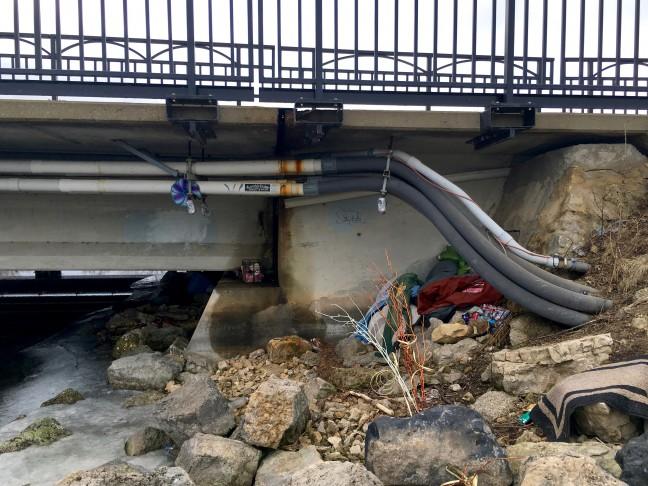At the top of State Street, signs of a protracted struggle begin to appear. Its participants lounge on the concrete blocks, or chat idly with their comrades. All around them, their foe marshals its forces. The combatants are as follows — the community of people who congregate around the top of State Street and the combined apparatus of the city government.
The contested territory, a couple hundred square meters at the top of State Street, has long been something of a beachhead for what city officials consider the “bad element” of Madison. It is a notable congregation space for a constellation of humanity — people in and around the homeless population, people selling or buying drugs or people simply there to pass the time.
Those first two characteristics, homelessness and substance abuse, are interesting. They represent structural problems that Madison, like a great number of other cities around the country, has no answer for.
Letter to the Editor: It’s time to acknowledge homeless, foster youth in higher education
So when city or police officials talk about a “bad element” in Madison, it is sometimes not clear what they’re referring to. Is it people? Or is it wider phenomena? Because the struggle city officials and the wider Madison population sees as they look across the concrete patio is bigger than it seems.
That hasn’t stopped the city from trying to minimize the “bad element.” In 2016, city police stepped up enforcement of city ordinances in that small area and made cops a regular sight on that side of Capitol Square. In a curious study of how laws are selectively used by police, they began to cite people for everything from “use of city electricity without a permit” to “occupying or damaging a planter, flower bed or planting.” Translated from ordinance-speak, this means plugging your phone into an outlet or sitting on a ledge. These citations were often accompanied with a fine that could reach into the hundreds of dollars. How these fines are supposed to deter, much less help people who probably can’t pay them anyway is a question that has never been answered.
Two years later, the population at the top of State Street has not been fined out of existence or into housing/addiction recovery. And the increased law enforcement presence did not accomplish its real goal, which was put once eloquently by a State Street denizen: “Get rid of us when the prissy white folks come through.” The city-sponsored performers and arranged seating that occasionally pop up have likewise failed to get anyone to budge. They just listen to the music.
Paper from Wisconsin Coalition Against Homelessness could be influential in next state budget
That quote rings true — while city officials are quick to claim citations, free concerts or cafe seating are by no means structural fixes, they do not seem anywhere close to finding or implementing an elusive long-term solution. It is enough to make one wonder if simply sweeping these people to another, quieter area is adequate in the minds of the city’s decision makers.
After all, the gatherers are beginning to stick out like a sore thumb below the shiny development of the surrounding area. Hip restaurants, gyms and bars — catering primarily to Madison’s growing upper crust — are springing up all over downtown. And the State Street crowd doesn’t exactly fit with the city’s glossy plan for the area.
Take, for example, the recently approved plan for a hotel on the northeast side of State Street. Citing “community support” as a major driver, the Madison Plan Commission voted almost unanimously to approve the proposal this past Monday. It is part of the aforementioned effort to activate the downtown space both socially and economically, thereby crowding out or at least drowning out the plaza inhabitants.
Madison fails, again, to adequately support homeless individuals
Though State Street contains every element of Madison life at one point or another, from busking crust punks to well-manicured religious proselytizers, the hotel plan and indeed most of the developments around the area in recent years, reflects the sensibilities of the people who control Madison political life. Strolling down upper State Street, past an elegant whiskey bar and a pricey botanical store, one begins to get the picture. It’s the same old Madison story, starring that timeless character — upper-middle-class white people. This city is being built for them. The city government is most forceful when trying to keep problems out of their eyes. And until that changes, the struggle will continue.
Sam Palmer ([email protected]) is a senior majoring in biology.














